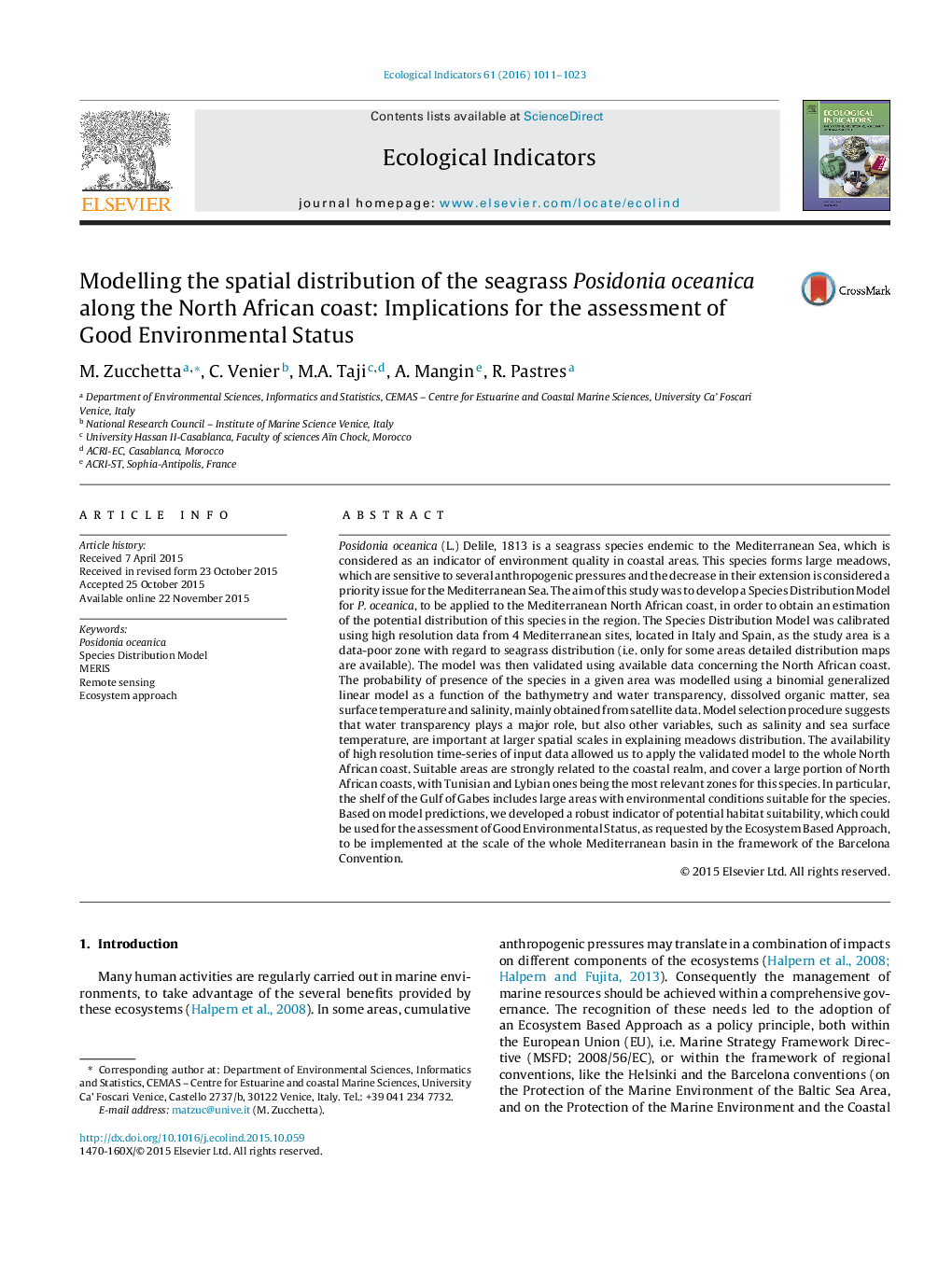| Article ID | Journal | Published Year | Pages | File Type |
|---|---|---|---|---|
| 6293787 | Ecological Indicators | 2016 | 13 Pages |
â¢We used satellite data to describe environmental conditions in five areas of the Mediterranean Sea.â¢We developed Species Distribution Model for Posidonia oceanica in the North African coast.â¢Observed/potential distribution ratio was used for the assessment of Good Environmental Status.
Posidonia oceanica (L.) Delile, 1813 is a seagrass species endemic to the Mediterranean Sea, which is considered as an indicator of environment quality in coastal areas. This species forms large meadows, which are sensitive to several anthropogenic pressures and the decrease in their extension is considered a priority issue for the Mediterranean Sea. The aim of this study was to develop a Species Distribution Model for P. oceanica, to be applied to the Mediterranean North African coast, in order to obtain an estimation of the potential distribution of this species in the region. The Species Distribution Model was calibrated using high resolution data from 4 Mediterranean sites, located in Italy and Spain, as the study area is a data-poor zone with regard to seagrass distribution (i.e. only for some areas detailed distribution maps are available). The model was then validated using available data concerning the North African coast. The probability of presence of the species in a given area was modelled using a binomial generalized linear model as a function of the bathymetry and water transparency, dissolved organic matter, sea surface temperature and salinity, mainly obtained from satellite data. Model selection procedure suggests that water transparency plays a major role, but also other variables, such as salinity and sea surface temperature, are important at larger spatial scales in explaining meadows distribution. The availability of high resolution time-series of input data allowed us to apply the validated model to the whole North African coast. Suitable areas are strongly related to the coastal realm, and cover a large portion of North African coasts, with Tunisian and Lybian ones being the most relevant zones for this species. In particular, the shelf of the Gulf of Gabes includes large areas with environmental conditions suitable for the species. Based on model predictions, we developed a robust indicator of potential habitat suitability, which could be used for the assessment of Good Environmental Status, as requested by the Ecosystem Based Approach, to be implemented at the scale of the whole Mediterranean basin in the framework of the Barcelona Convention.
